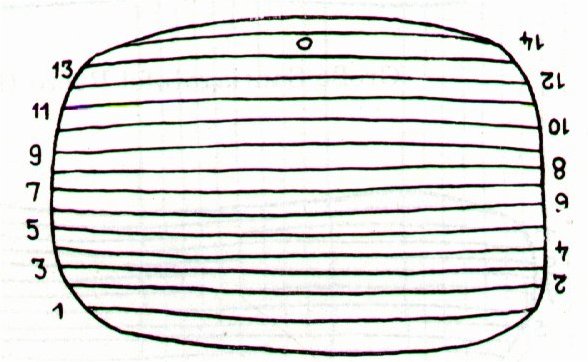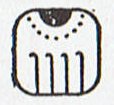The first Mayan day sign was Imix (the Sea-dragon), illustrated as a rising serpentine creature with 'watery Sun' symbols:
"World trees are a prevalent motif occurring in the mythical cosmologies, creation accounts, and iconographies of the pre-Columbian cultures of Mesoamerica. World trees embodied the four cardinal directions, which also serve to represent the four-fold nature of a central world tree, a symbolic axis mundi which connects the planes of the Underworld and the sky with that of the terrestrial realm ... Among the Maya, the central world tree was conceived as or represented by a ceiba tree, and is known variously as a wacah chan or yax imix che, depending on the Mayan language. The trunk of the tree could also be represented by an upright caiman, whose skin evokes the tree's spiny trunk ... World trees are frequently depicted with birds in their branches, and their roots extending into earth or water (sometimes atop a 'water-monster', symbolic of the underworld). The central world tree has also been interpreted as a representation of the band of the Milky Way." (Wikipedia) I think this creature corresponds to the Chinese Dragon referred to at κ Virginis:
I also suggest he is Rigi, the 'big worm', who raised the sky very high: ... A very detailed myth comes from the island of Nauru. In the beginning there was nothing but the sea, and above soared the Old-Spider. One day the Old-Spider found a giant clam, took it up, and tried to find if this object had any opening, but could find none. She tapped on it, and as it sounded hollow, she decided it was empty. By repeating a charm, she opened the two shells and slipped inside. She could see nothing, because the sun and the moon did not then exist; and then, she could not stand up because there was not enough room in the shellfish. Constantly hunting about she at last found a snail. To endow it with power she placed it under her arm, lay down and slept for three days. Then she let it free, and still hunting about she found another snail bigger than the first one, and treated it in the same way. Then she said to the first snail: 'Can you open this room a little, so that we can sit down?' The snail said it could, and opened the shell a little. Old-Spider then took the snail, placed it in the west of the shell, and made it into the moon. Then there was a little light, which allowed Old-Spider to see a big worm. At her request he opened the shell a little wider, and from the body of the worm flowed a salted sweat which collected in the lower half-shell and became the sea. Then he raised the upper half-shell very high, and it became the sky. Rigi, the worm, exhausted by this great effort, then died. Old-Spider then made the sun from the second snail, and placed it beside the lower half-shell, which became the earth. And finally I suggest the undulating Sea-dragon may have inspired the rongorongo writers to let their text lines begin at bottom and increase upwards in a serpentine flow. The even numbered lines would then necessarily become inverted, to show the bottom of the serpent's body.
There were 2 such 'text serpents', one on each side. Line Ca1 has a hole in its center and this hole is at the top of the opposite side of the tablet. The 'serpent' on side a has its beginning where the text on the other side has its end, close to the hole. The end of the text on side b is in parallel with the beginning of the text on side a, viz with 8 days from March 22 to March 29:
"... in tz. 55.f, page 36 [of the Dresden Codex], we again find a full figure of the crested dragon, apparently not in the sea itself but in falling torrents, with a double-imix crest ..." (William Gates, An Outline Dictionary of Maya Glyphs.)
| |||||||||||||||||||||||||||||||||||||||||||||||||||||||||||||||||||||||||||||||||||||||||||||||||||||||||||||||||||||||||||||||||||||||||||||||||||||||||||||











